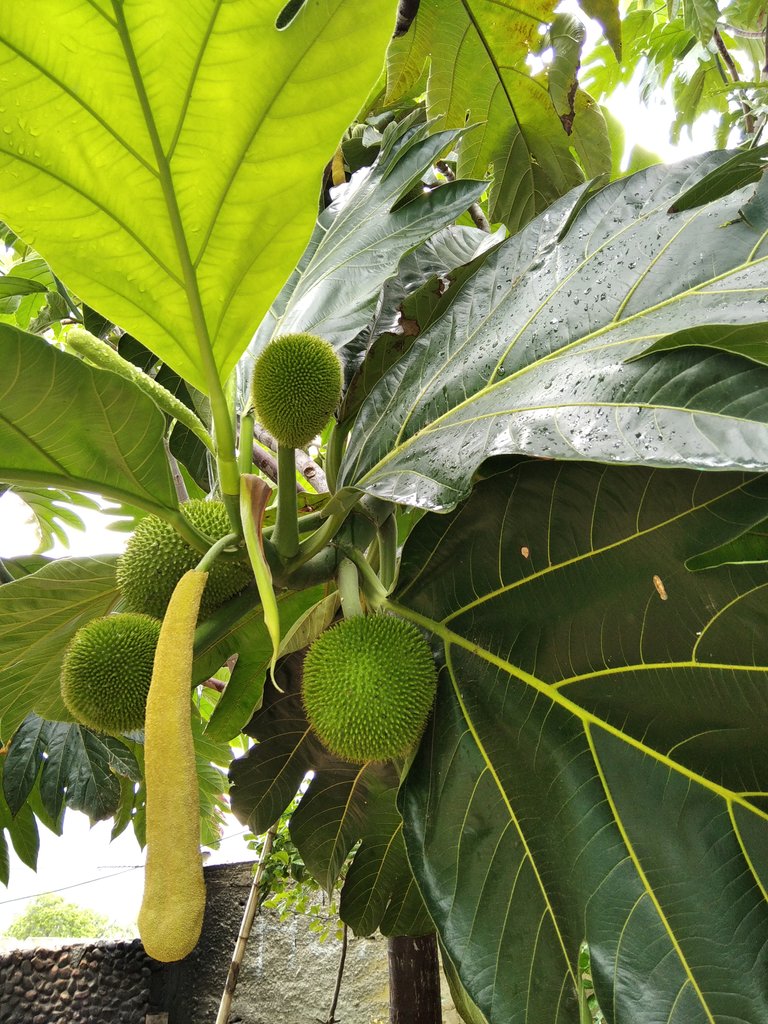
Also known as poor man's bread, breadfruit, etc. . You may think (I thought it was impossible to sow a bread seed) It is just a name but I wish bread would grow in the garden of the house (no more world famine) nice dream right? or how is that going to make a bread if it is a rare plant? breadfruit is considered simply as a food for the poor or only in emergency situations.
Well I keep telling to learn more about this tree , these beauties ( the ones in the pictures ) I took them when I went to visit my maternal aunt's house in the city of tocuyo ( where the miss Mariam Habach came from ) how sad that she did not win , long live Venezuela! .
También conocido como pan de pobre , fruta del pan, etc . Ustedes pensaran (yo creía imposible sembrar una semilla de pan) Solo es nombre pero ojala el pan creciera en el jardín de las casa (se acaba la hambruna mundial ) bonito sueño verdad ? o cómo va a hacer eso un pan si es una planta rara? . la fruta de pan se considera simplemente como un alimento para los pobres o sólo en situaciones de emergencia.
Bueno sigo contando para aprender más de este arbol , estas bellezas ( las que aparecen en las fotos) las tomé cuando fui de visita a casa de mi tia materna en la ciudad del tocuyo (de donde salió la miss Mariam Habach ) que triste que ella no ganó , viva venezuela! .
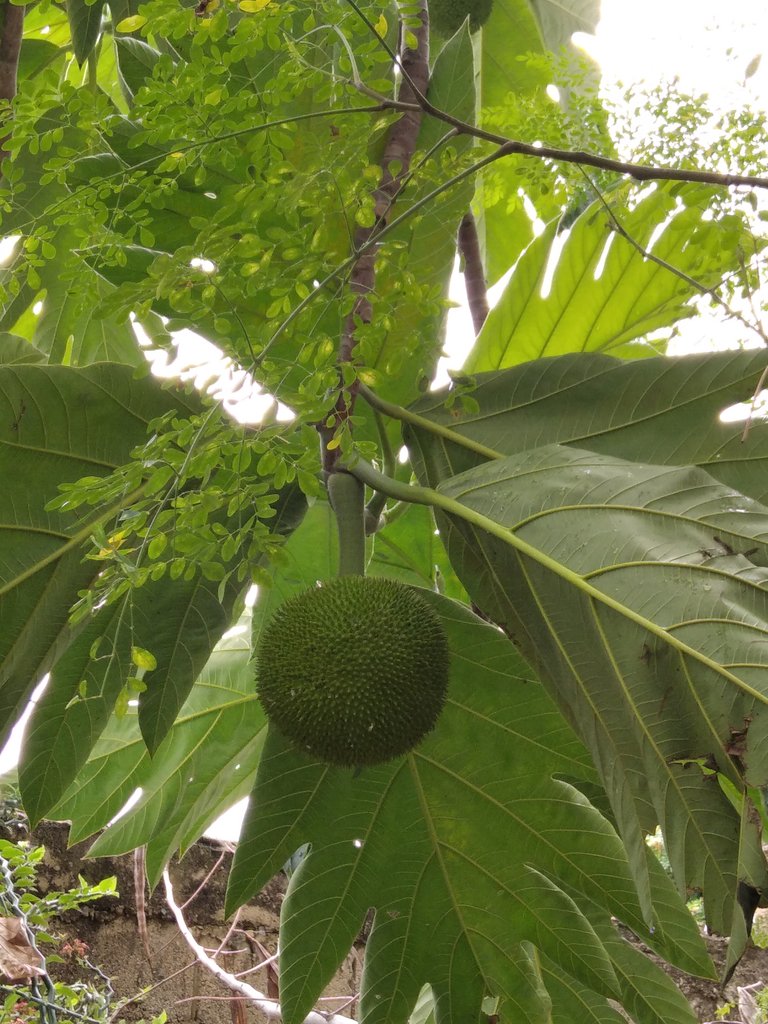
If you have a yard you can have this fruit, since it is a medium sized tree that can grow from 15 to 26 meters high, belonging to the Moraceae family. Its seed is edible. Some fruits have a smooth surface, others are conical. Some fruits may have a hard and rough rind like sandpaper. Generally, the rind is green at first, turning yellowish-green, yellow or yellow-brown when ripe. It can be eaten ripe as a fruit or unripe (as the one who does not like my post) as a vegetable, (what is inside the parenthesis is just for fun to read, but the information I explain is based on questions and answers to my relatives and internet about this fruit as I am a tourist in the tocuyo and did not even know of its existence).
Si tienen patio pueden tener este fruto , ya que es un árbol de mediano tamaño que puede crecer desde 15 a 26 metros de altura, perteneciente a la familia de las Moráceas. Su semilla es comestible. en algunos frutos de superficie suave, en otros cónica. Algunas frutas pueden tener una corteza dura y áspera como papel de lija. Generalmente, la corteza es de color verde al principio, girando verde-amarillento, amarillo o amarillo-marrón cuando maduran. Se puede comer madura como una fruta o inmadura (como al que no le guste mi post) como un vegetal , (lo que está dentro del paréntesis solo es para que sea divertido leer , pero la información que explico es a base de preguntas y respuestas a mis familiares e internet sobre este fruto ya que soy turista en el tocuyo y ni sabia de su existencia ).
These fruits are rich in starch; it is consumed after being roasted, stewed or fried. The fruits should be eaten green, because once ripe they are tasteless (but it is the taste of each person).
Estos frutos son ricos en fécula; es consumido después de ser tostado, guisado o frito. (si esas enormes esferas se pueden comer de muchas formas ) . Los frutos deben consumirse verdes, pues una vez maduros son insípidos (pero es el gusto de cada quien ).
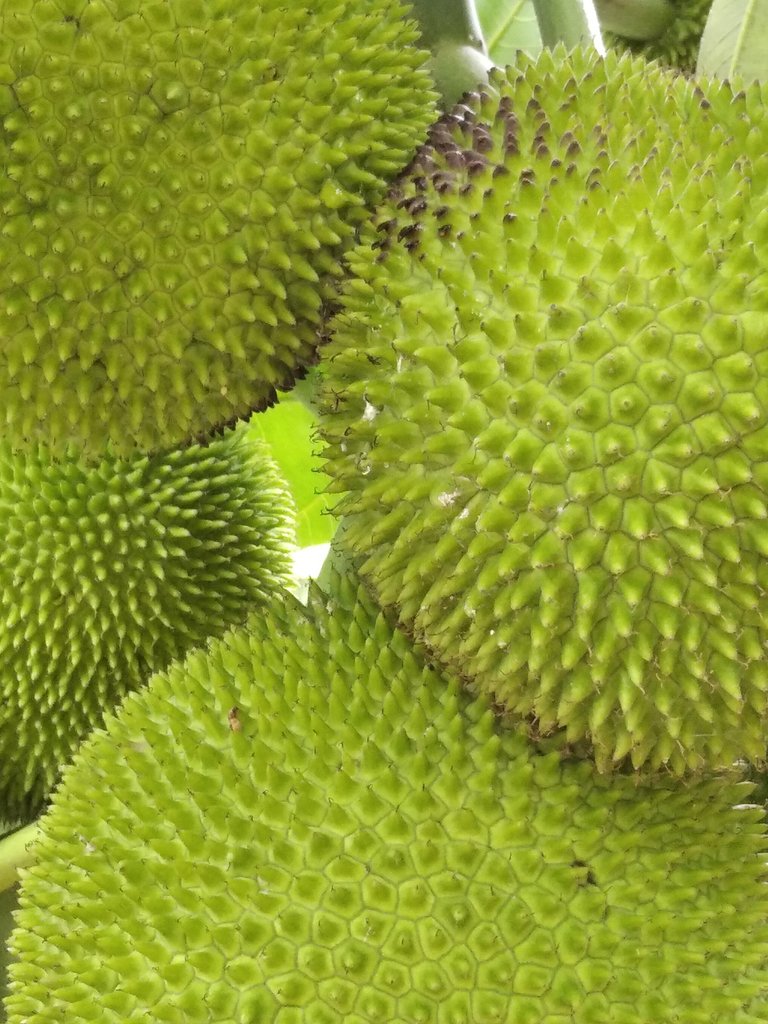
This plant is believed to be native to a vast area stretching from New Guinea through the Indo-Malaysian archipelago to western Micronesia. It has been widely spread in the Pacific area through the migration of Polynesians and Hawaiians. It is believed to have been brought from the Samoan island of Upalu to Oahu (Hawaii).
Esta planta se cree que es nativa de una vasta zona que se extiende desde Nueva Guinea a través del archipiélago indo-malayo hasta la Micronesia occidental. Ha sido ampliamente difundida en la zona del Pacífico mediante la migración de los polinesios y hawaianos. Se cree que fue traído desde la isla de Samoa de Upalu a Oahu (Hawái).
This tree was first seen by Europeans in the Marquesas Islands in 1595, then in Tahiti in 1606. In the early eighteenth century, early English explorers spoke of them in their praises, and their fame, along with several periods of famine in Jamaica between 1780 and 1786, inspired plantation owners in the British West Indies, at the request of King George III, to import breadfruit seeds to provide food for their slaves. (Apparently the stingy king sees it as a bargain! they eat and I do not spend so much and everyone is happy! )
Este árbol fue visto por primera vez por los europeos en las islas Marquesas, en 1595, luego en Tahití en 1606. A principios del siglo XVIII, los primeros exploradores ingleses hablaron de ellos en sus alabanzas, y su fama, junto con varios períodos de hambruna en Jamaica entre 1780 y 1786, inspiraron a los propietarios de las plantaciones en las Antillas británicas, a petición el rey George III, a la importación de semillas de árboles del pan para proporcionar alimentos a sus esclavos. ( al parecer el rey tacaño lo ve como que oferton! ellos comen y yo no gasto tanto y todos felices ! )

The French navigator Sonnerat in 1772, obtained the seed in the Philippines and took it to the French West Indies. It also seems that some seeds and seedlings arrived in Jamaica from a French ship bound for Martinique, but which was captured by the English in 1782. There were at least two Breadfruit plants in Jamaica in 1784 and distribution was quickly made to the other islands. There is a record of a plant being shipped from Martinique to the St. Vincent Botanical Garden before 1793.
El navegante francés Sonnerat en 1772, obtuvo la semilla en las Filipinas y lo llevó a las Antillas francesas. Parece también que algunas semillas y plantas de semilla llegaron a Jamaica desde un buque francés con destino a Martinica, pero que fue capturado por los ingleses en 1782. Hubo al menos dos plantas de Fruta de Pan en Jamaica en 1784 y rápidamente se hizo la distribución a las otras islas. Hay un registro de haber sido enviada una planta desde Martinica al Jardín Botánico de San Vicente antes de 1793.
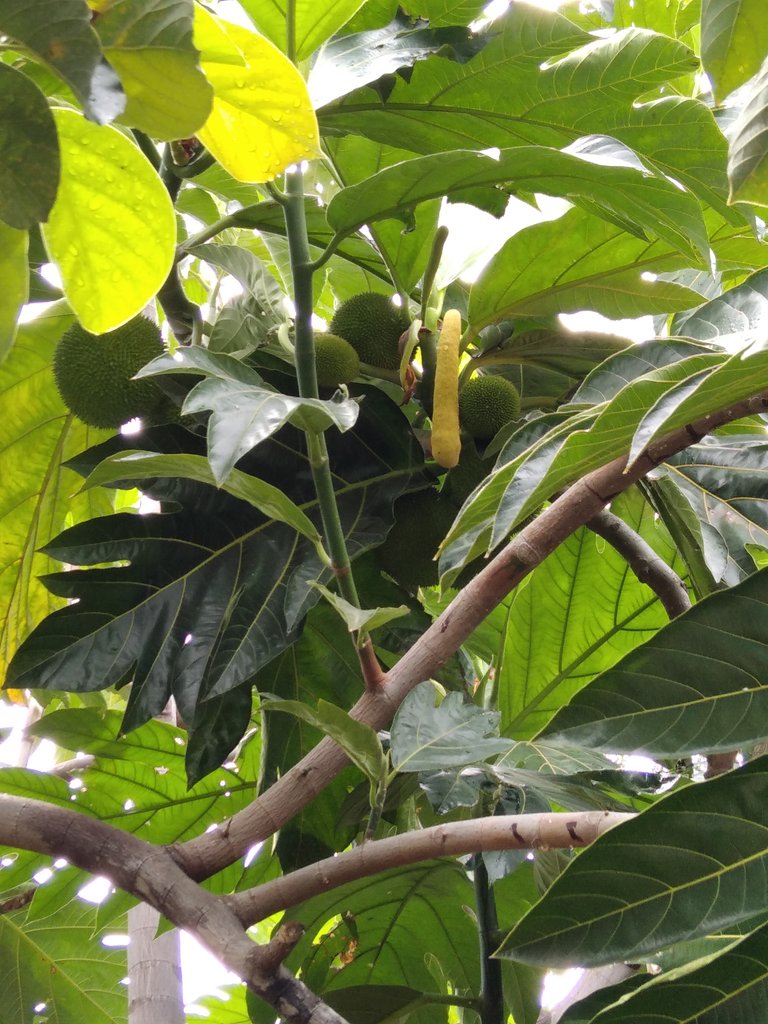
In Guyana, in 1978, about 1000 new breadfruit trees were being produced each year, but not enough to meet the demand, there and in Trinidad, due to the large population of Asians who consume it, both seeded and seedless, as a valued part of the diet; in other areas of the Caribbean (and it took all these events for me to see it at my aunt's house). It is crazy to think that something we see at a glance is actually imported and had many factors that involve its transfer as mentioned above and even sometimes with problems to reach new destinations that will make a great social and economic impact for development or in some cases may be the opposite.
En Guyana, en 1978, alrededor de 1000 nuevos árboles del pan se producían cada año, pero no lo suficiente para satisfacer la demanda, allí y en Trinidad, debido a la gran población de asiáticos que la consumen, tanto con o sin semillas, como parte apreciada de la dieta; en otras zonas del Caribe (y tuvo que pasar todo estos acontecimientos para luego yo verla en casa de mi tia). Es loco pensar que algo que vemos a simple vista es en realidad importado y tuvo muchas factores que involucran su traslado como es mencionado anteriormente y hasta a veces con problemas para llegar a nuevos destinos que harán un gran impacto social y económico para el desarrollo o en algunos casos puede que lo contrario.
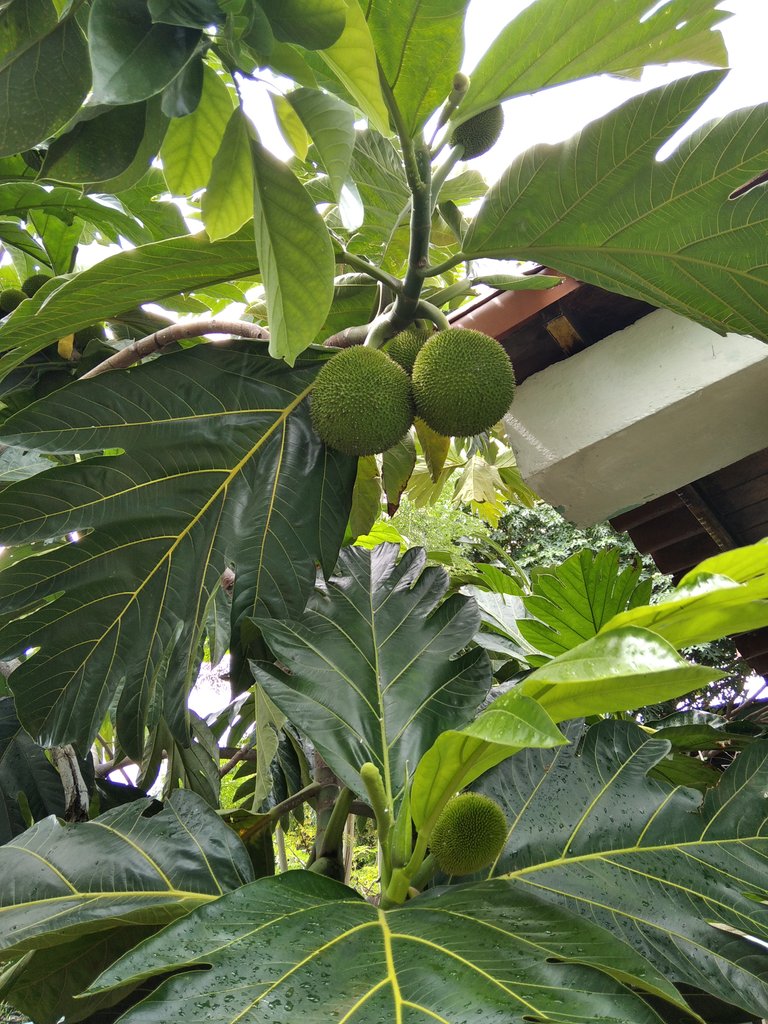
If you have read everything then I am glad that now you know something about this plant and if you already know it I would like to know your experience with this plant, thanks for reading a hug.
Si has leído todo pues me alegra que ahora sepas algo sobre esta planta y si ya la conocias me gustaria saber tu experiencia con esta planta , gracias por leer un abrazo.
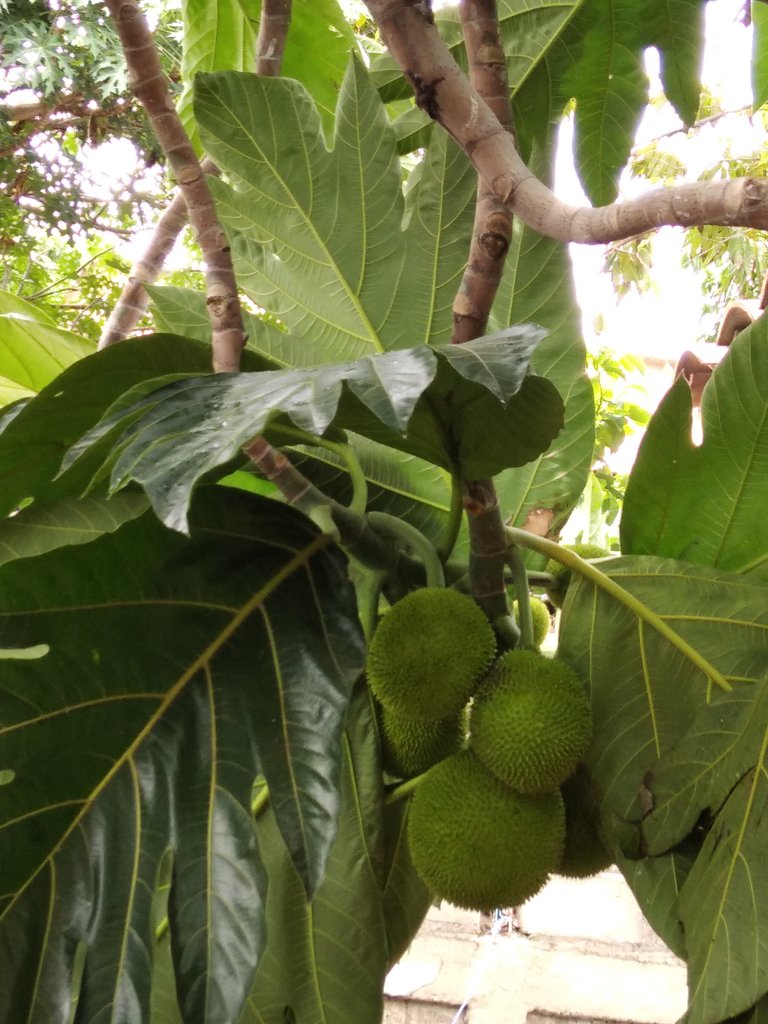
Congratulations @kimi-gon! You have completed the following achievement on the Hive blockchain and have been rewarded with new badge(s) :
Your next payout target is 50 HP.
The unit is Hive Power equivalent because your rewards can be split into HP and HBD
You can view your badges on your board and compare yourself to others in the Ranking
If you no longer want to receive notifications, reply to this comment with the word
STOPMuy interesante. Casualmente estaba jugando un videojuego donde salen estos arboles y no sabía de qué se trataban porque nunca había visto uno, ahora ya lo sé je je 😄
Lol!!! A bueno ya sabes 😏 "pan de pobre "